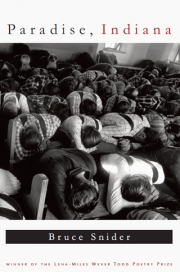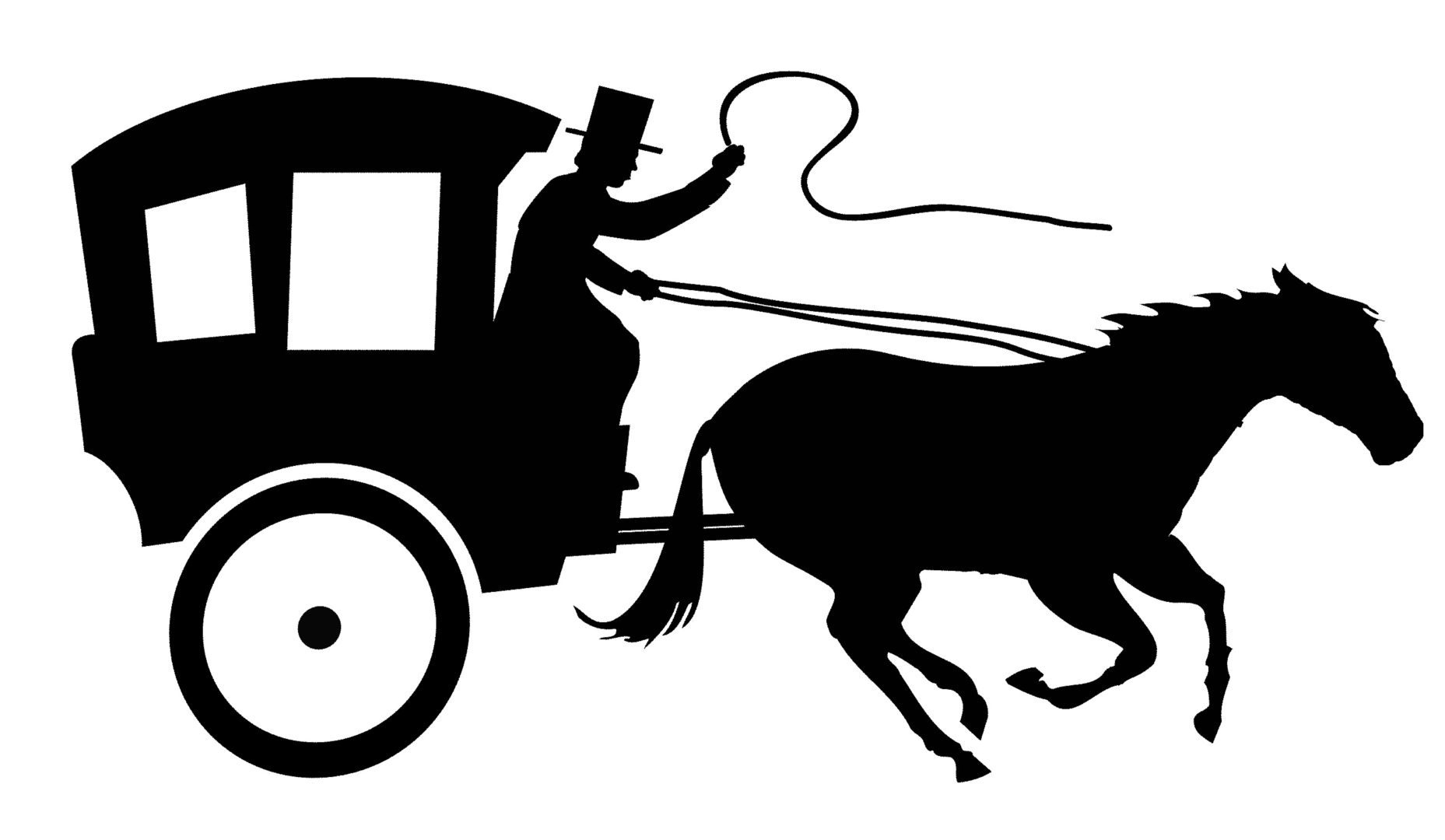Christian Anton Gerard

by Bruce Snider
Louisiana State University Press
2012
$17.95
“Have I reached the end of the world? / Or Indiana?” Bruce Snider asks at the end of the ghazal titled “Map,” the poem which begins his second collection Paradise, Indiana. The questions are an apropos beginning for a collection thus titled because, like the book’s title this poem and these questions work double duty (a theme throughout this review and one of the aspects of Snider’s work I most admire). On the one hand the questions announce the collection’s spatial situation (all of these poems do deal with or are placed in Indiana), but on the other hand “Map’s” end suggests the emotional landscape this collection associates with that state. The questions are a situating arrival of sorts because the poem begins in statement and ends in this doubled place, an Indiana that is both a mysterious lost state in the American imagination and a mysterious present state in Snider’s imagination and memory.
In this opening ghazal Indiana is “a place where the river bank / passes through you, where the Amish girls spread their skirts” and “a place where spring breaks the yellow news of the pawpaw tree, / where a pan of grease hisses against a flame called Indiana,” but is also the home of “Amy Blaine, who drowned when she was twelve” and “My father’s pulse” that “slows between systole and diastole.” I don’t belabor Snider’s Indiana’s menagerie because “Map” is our introduction to this place, but because “Map” is our introduction to how this poet thinks. I am not just interested in reading about this place because it’s there. I’m interested in reading about this place because one of Snider’s chief poetic gifts is his ability to invent, to make particularity into a universal.
In “Epitaph,” for example, we encounter a title that is both noun and verb, already written and in its own act of creation. We also meet Nick, one of the collection’s central figures and his own kind of paradise. Nick is the “cousin…buried in ground so hard / they had to heat the dirt with lamps / before they could dig…” and just a few poems later in (the first of seven poems titled) “Afterlife” Nick’s arms pull the speaker “into the shanty, gooseflesh / against mosquito welts, his tongue / salty in my mouth.” As the collection moves from these early poems, Nick (and Snider’s Indiana) is elegized in a way that invents this person (and the accompanying grief/celebration) for the reader.
This doubleness, this complication inherent in Nick’s progression through the collection stands as testament to Snider’s understanding of the “presentness of the past” as Eliot says. Sure, much of this collection is obsessed with remembering, but all of us who write are obsessed with remembering. What strikes me most thoughout is Snider’s ability to combine the elements of place and memory in a way that lets the reader invest in the experience as well. In the second “Afterlife” the speaker wakes “to leafless vines and muddy fields, patches of standing water.” The narration here, in and of itself, is the setting of general experience. The poem continues
…His pocketknife
waits in my dresser drawer, still able to gut fish.
I pick up his green shirt, put it on for the fourth day
in a row. Outside, the rusty nail he hammered
catches me, leaves its stain on everything.
This poem (I’ll cite the ending in a moment) can serve as synecdoche for the collection as a whole. Beginning with the general, moving to the particular (the pocketknife), then moving to the weight of places and things in the human world and how we carry and interact with them, this is where Snider’s poems excel. In six lines we’ve moved from the ethereal waking to the attached particulars of memory to the presentness of memory in grief as the grieving go on living, which the collection makes clear is a paradise like none other. The speaker goes on doing what he and Nick had always done together. He goes on fishing, but now “when the trout bite, / I pull the serviceable things glistening into the air.”
“The serviceable”: an interesting and rare adjective in the modern lexicon, but exceedingly important to this collection’s success. The OED reminds us this word means “of things: capable of being applied to appropriate purpose, or to the performance of a proper function.” The trout, the impulse to elegy, the diligent and skillful rendering of past and present in Snider’s youth, the Indiana where it took place, the learning to love with and through Nick, these are the “serviceable things” Snider pulls into the air in front of us. And these things glisten with force because Snider is not only an excellent inventor through image and metaphor, but he is also an excellent craftsman.
It might be said that couplets win this collection’s day, and it may be true, but fitting for both the heroizing of memory and elegizing of youth and the deceased. The white space provided through so many of these poems suggests we move with the reverence and attention a life deserves. In the book’s title poem we see “Mom in the front seat, the whole car shaking / as they fought” and
…my parents
walking arm in arm past the nativitywith its Baby Jesus, twice stolen, now nailed
to the manger, his cracked halo painted so yellowit could be, if seen from a distance, polished gold.
The space Snider provides via the couplet allows each of his lines to work in fluid binary terms. On the one hand, the poem’s narration progresses, and yet on the other the parents are linked to the idea of nativity: the Baby Jesus is linked in turn to the human-ness of believing that the same thing can be stolen. We also understand the importance of perspective as the last line imagines the way yellow paint can stand for polished gold if we allow ourselves to see it that way.
But Snider also gives us grief’s urgency in a poem like “Fortress”:
After his death Aunt Starr disappeared
in heaps of faux gold jewelry, a river
of coffee poets and purses, spare light
bulbs, Bible verses. She wrote scripture
on seed catalogues, prayed to
the God of another spatula, another
sponge, ten lawn mower blades
and her sudden lunge for the thrift
store bin…
Here, Aunt Starr (Nick’s mother) is active in her grief. Snider’s use of the line demonstrates his own poetic agency, an urgency memory requires to write such poems. The way these lines are used allows us to believe Aunt Starr both did and didn’t disappear, that she prayed to seed catalogues and her God, that sometimes life’s messiness is its clearest form of being. The buried rhymes of “heaps” and “coffee,” “light” and “Bible” drive the poem’s movement, creating wonder alongside sorrow. Snider isn’t just narrating what happened. He is inventing this character and her grief. In doing so, Snider is allowing his own experience to act in the reader’s mind through this shift in perspective.
I imagine some readers may find this collection too “confessional” or “sentimental” at times – perhaps even too “earnest.” But then again, we do seem to be currently in a climate where linguistic explosiveness is often favored over the risk of real feeling. I champion Snider’s risk in the personal. I am energized by the way these often elegiac poems search for and produce the kind of self-knowledge for which we go to poetry. I am struck by Snider’s desire to find the celebratory in grief’s desperate dark, and I am refreshed to find a collection that believes in the force of narrative. Paradise, Indiana is, as Whitman says, “stuffed with the stuff that is coarse and stuffed with the stuff that is fine.” Snider’s second collection is a cohesive and unified mix of wide-ranging emotions and images, styles and forms serving as an expansive reminder that place and memory are at the core of who we are.
Christian Anton Gerard has received Pushcart Prize nominations, scholarships from the Bread Loaf Writers’ Conference, and an Academy of American Poets prize. Some of his recent poems can or will soon be found in Apt, Waccamaw, PANK, The Journal, Orion, The Rumpus and elsewhere. Gerard lives with his wife, Lucy, in Knoxville where he’s Editor of Grist: The Journal for Writers, the Nathalia Wright Research Assistant for Early Modern Studies and an English Ph.D. candidate at the University of Tennessee.

